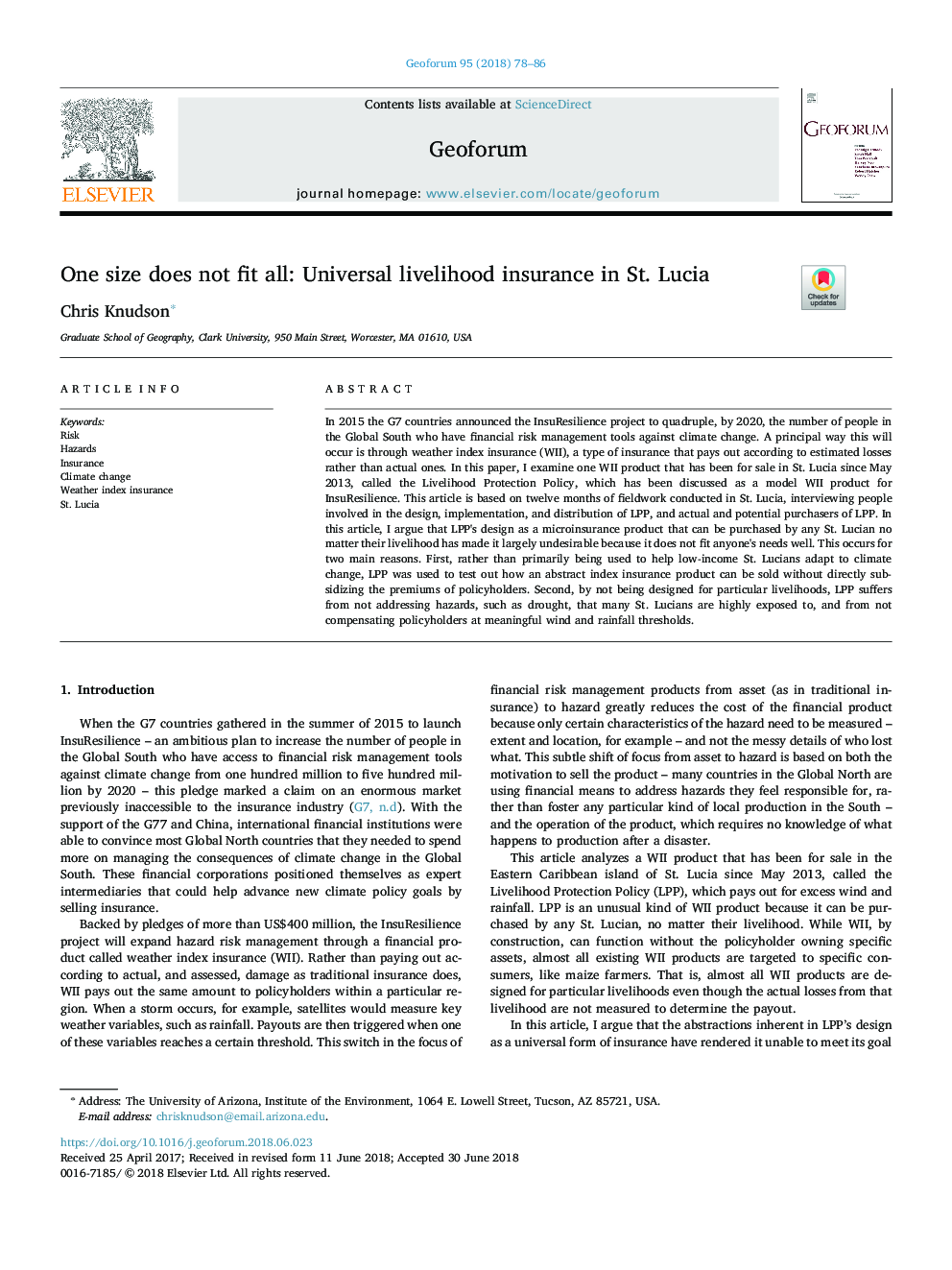| Article ID | Journal | Published Year | Pages | File Type |
|---|---|---|---|---|
| 7353326 | Geoforum | 2018 | 9 Pages |
Abstract
In 2015 the G7 countries announced the InsuResilience project to quadruple, by 2020, the number of people in the Global South who have financial risk management tools against climate change. A principal way this will occur is through weather index insurance (WII), a type of insurance that pays out according to estimated losses rather than actual ones. In this paper, I examine one WII product that has been for sale in St. Lucia since May 2013, called the Livelihood Protection Policy, which has been discussed as a model WII product for InsuResilience. This article is based on twelve months of fieldwork conducted in St. Lucia, interviewing people involved in the design, implementation, and distribution of LPP, and actual and potential purchasers of LPP. In this article, I argue that LPP's design as a microinsurance product that can be purchased by any St. Lucian no matter their livelihood has made it largely undesirable because it does not fit anyone's needs well. This occurs for two main reasons. First, rather than primarily being used to help low-income St. Lucians adapt to climate change, LPP was used to test out how an abstract index insurance product can be sold without directly subsidizing the premiums of policyholders. Second, by not being designed for particular livelihoods, LPP suffers from not addressing hazards, such as drought, that many St. Lucians are highly exposed to, and from not compensating policyholders at meaningful wind and rainfall thresholds.
Related Topics
Social Sciences and Humanities
Economics, Econometrics and Finance
Economics and Econometrics
Authors
Chris Knudson,
